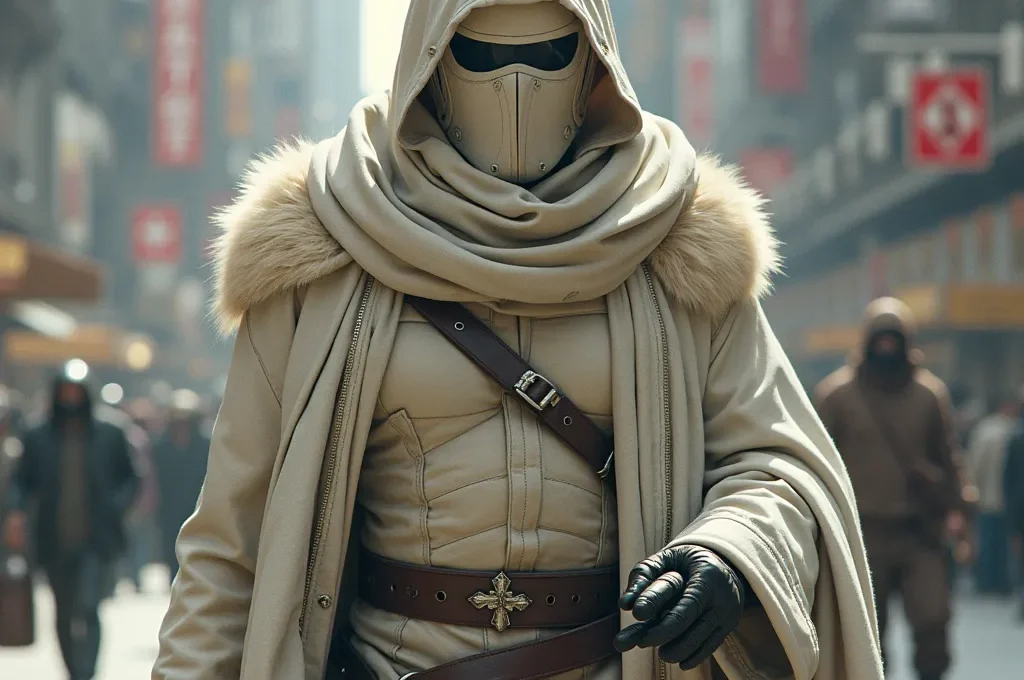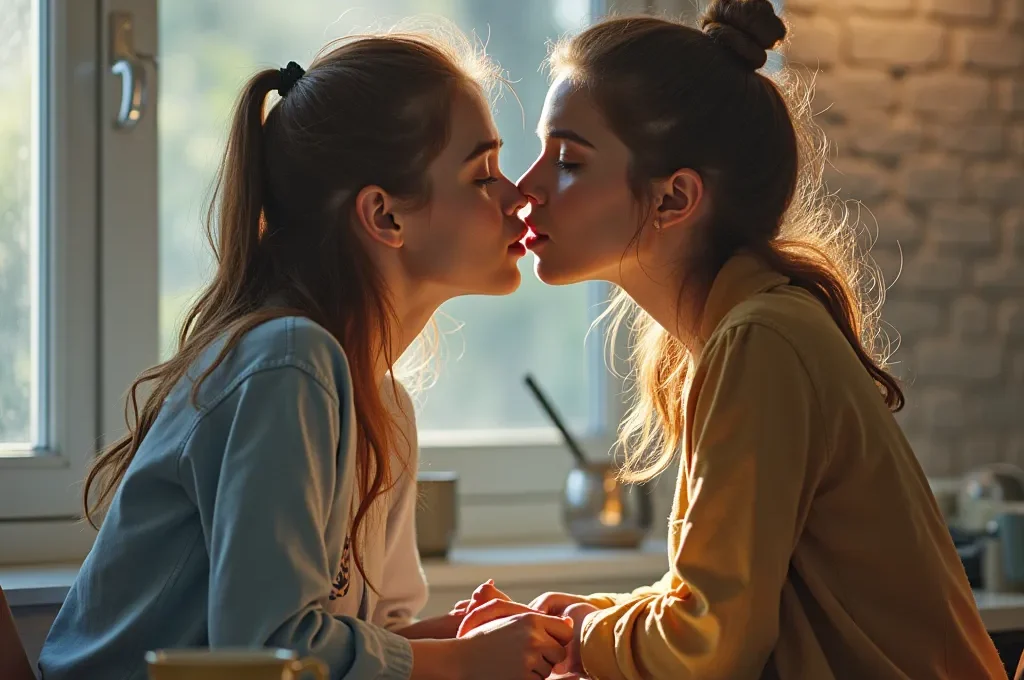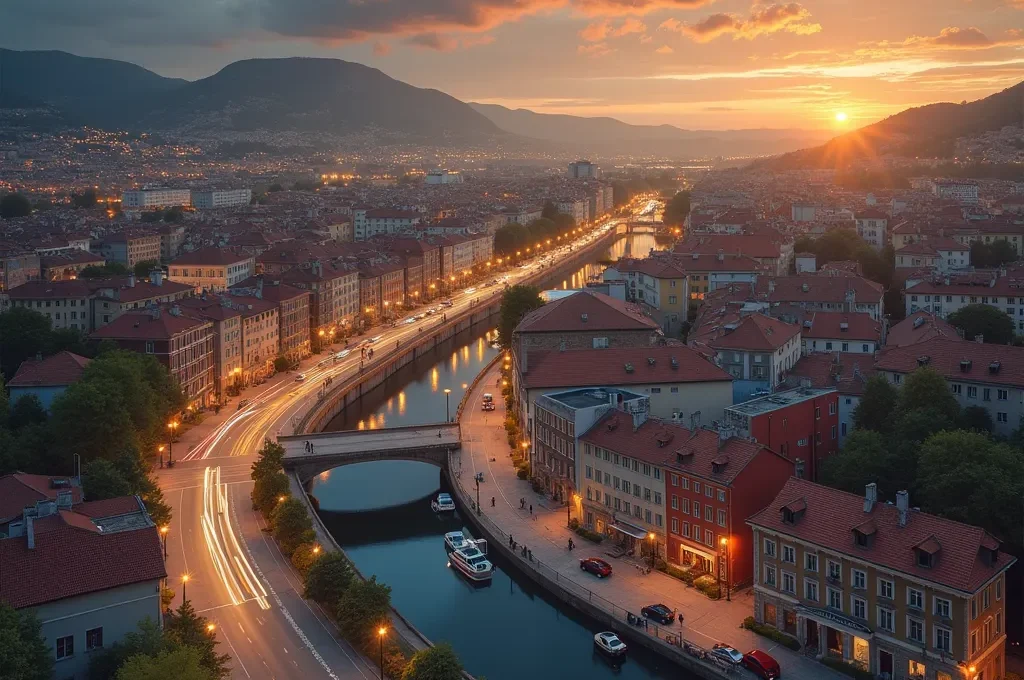
Standing at street level amid December crowds, you face an impossible calculation. Should you brave the cold, navigate unfamiliar arrondissements, and hope your walking route captures Paris’s festive magic? Or does surrendering to a bus tour mean sacrificing authenticity for passive convenience? This false dichotomy dissolves when you understand what actually happens during a Christmas bus tour.
The transformation isn’t about choosing comfort over immersion. It’s about fundamentally reorchestrating how you encounter festive Paris. When you board expertly designed Christmas bus tour experiences, you’re not merely sitting instead of walking—you’re activating an entirely different perceptual, cognitive, and emotional framework that amplifies rather than diminishes your connection to the City of Light.
From logistical burden to cinematic immersion: the bus fundamentally reorchestrates your encounter with festive Paris. This article explores the perceptual psychology, sensory mechanisms, and memory architecture that make bus tours deliver not just more convenient sightseeing, but genuinely superior Christmas experiences that last long after you return home.
Transform Your Paris Christmas: Essential Insights
- Elevation creates a theatrical perspective that reveals architectural lighting design invisible from street level, transforming Paris into curated spectacle
- Thermal and sensory contrast between warm interior and cold exterior intensifies emotional experience and strengthens memory encoding
- Relinquishing navigational control liberates cognitive resources, enabling full aesthetic presence impossible during walking tours
- Professional routing delivers 15-20 illuminated landmarks versus 4-6 on foot in equivalent time, tripling experiential density
- Continuous narrative experiences create more durable memories than fragmented walking explorations through superior memory formation architecture
How Elevation Reframes Paris as a Curated Christmas Theater
Your brain processes space and spectacle differently depending on viewpoint. At street level, Paris Christmas illuminations compete with immediate obstacles—pedestrians, storefronts, traffic—fragmenting your visual field into disconnected snapshots. Elevation transforms this relationship entirely.
From the dress circle perspective of a double-decker bus, architectural Christmas lighting design reveals itself as intentional composition rather than random decoration. The slight elevation—approximately four meters above street level—creates an optimal viewing angle that captures multiple illuminated layers simultaneously: ground-level displays, mid-building facade lighting, and skyline silhouettes against the winter sky. This vertical visual density remains completely inaccessible to ground-level observers.
The phenomenon intensifies during peak season. Paris welcomed 47.5 million visitors in 2023, with the Christmas period drawing particularly dense crowds that create significant street-level obstruction. Elevation solves this challenge not through avoidance but through transformation—crowds become part of the spectacle rather than impediments to it.
The bus windows function as cinematic frames, naturally composing and sequencing illuminations like film scenes. Unlike the chaotic visual fragments of street-level navigation, window framing creates deliberate vignettes. Each view becomes a carefully bordered composition, guiding your eye toward focal points while softening peripheral distractions into artful bokeh.

This framing effect generates movement-powered narrative continuity. As the bus flows through illuminated boulevards, transitions between sites feel choreographed rather than accidental. The Champs-Élysées canopy dissolves into Place de la Concorde’s geometric precision, which yields to the organic curves of department store window displays—a cohesive visual story impossible to replicate through walking’s disjointed episodic structure.
Visitor experiences confirm this perceptual transformation. Tourists consistently report seeing illuminated attractions including the Louvre, Eiffel Tower, and Arc de Triomphe as a continuous visual narrative, with strategic stops timed to capture optimal viewing moments like the Eiffel Tower’s hourly sparkle display. The elevation doesn’t distance you from Paris—it reveals Paris as theater, with you occupying the perfect seat.
| Viewing Aspect | Street Level | Bus Elevation (4m) |
|---|---|---|
| Visual Range | Limited to immediate surroundings | Panoramic 360° views |
| Architectural Details | Ground floor only | Multiple building levels visible |
| Crowd Interference | Significant obstruction | Clear sightlines above pedestrians |
| Light Display Patterns | Fragmented sections | Complete installation overview |
The Warm Cocoon Effect: Sensory Contrast as Memory Amplifier
Comfort represents far more than passive convenience in experience design. The temperature differential between heated bus interior and December’s exterior cold creates a psychological mechanism that intensifies rather than diminishes your connection to festive Paris.
Thermal contrast psychology operates through protective observation. The cozy warmth while viewing cold Parisian winter creates a safe vantage point that paradoxically amplifies festive feeling. You’re not insulated from the experience—you’re experiencing it through heightened sensory contrast that makes the magic feel more vivid, more special, more worthy of attention and encoding.
This principle extends beyond temperature. Freedom from navigational anxiety, weather discomfort, and crowd stress allows complete attentional devotion to wonder rather than survival logistics. Your cognitive resources aren’t fragmented across multiple concerns—orientation, cold management, route optimization—but concentrated entirely on aesthetic and emotional reception.
Active engagement, as opposed to passive observation, results in experiential memories that are more likely to be vivid and lasting
– Tourism Memory Research, Vaia Educational Platform
The bus environment enables this active engagement precisely because it eliminates passive survival tasks. You’re actively present to beauty rather than passively enduring cold. Research confirms that emotional intensity and sensory details represent two of seven critical dimensions affecting tourism memory characteristics, with the warm-cold contrast directly amplifying both dimensions.
The intimate bubble phenomenon transforms mass tourism into personal experience. Despite Paris hosting millions during the festive season, the enclosed bus space creates a private capsule—a mobile living room from which you observe the spectacle. This contained environment fosters what researchers call contemplative mode, shifting brain state from active problem-solving to receptive absorption, the optimal neurological condition for awe and deep memory formation.
Practical testimonials validate this theoretical framework. Passengers consistently report being warm enough with thermals and layers while sitting close together, creating a cozy atmosphere that enhanced enjoyment despite December weather. The comfort wasn’t incidental—it was architectural, deliberately designed to amplify rather than diminish your encounter with Paris’s festive magnificence.
| Environmental Condition | Interior Bus Temperature | Sensory Experience Impact |
|---|---|---|
| December Evening (5-8°C) | Heated (18-20°C) | 15°C contrast enhances comfort appreciation |
| Wind Exposure | Protected environment | Security sensation amplifies relaxation |
| Visual Cold (winter scene) | Physical warmth | Contrast intensifies festive atmosphere perception |
From Navigator Stress to Storytelling Passenger: Role Transformation
The psychological shift from active navigator to receptive audience member addresses a core implicit objection: does relinquishing control mean sacrificing authenticity? The answer reveals a counterintuitive truth about attention and presence.
As navigator, you allocate substantial cognitive resources to orientation, route optimization, and decision-making. Map-reading, choosing between competing attractions, estimating walking times, managing fatigue—these tasks consume working memory that becomes unavailable for aesthetic appreciation and emotional presence. You’re solving logistics problems when you could be experiencing wonder.
The passenger role liberates this cognitive load. Pre-designed professional routing eliminates exhausting micro-decisions that fragment walking tours, replacing choice anxiety with surrender to expert choreography. This isn’t passive consumption—it’s strategic receptivity, recognizing that relinquishing navigational control paradoxically increases experiential control. You control your emotional presence rather than your geographic position.
Mindfulness is relevant for coding memory – if tourists are mindful of their behavior, they tend to have memorable experiences
– Tung et al., ResearchGate Tourism Memory Framework
Mindfulness requires freed attention. The bus tour’s structure creates conditions for this presence by handling all navigational complexity, allowing you to devote full awareness to the unfolding spectacle. Expert narration adds another dimension absent from solo exploration—guided commentary transforms anonymous lights into layered stories, providing historical and cultural depth that enriches rather than distracts from visual experience.
The role transformation delivers multiple cognitive benefits beyond simple convenience. Liberation from navigation decisions creates space for aesthetic appreciation. Audio commentary provides contextual depth impossible to access independently. The shared experience with other passengers generates social memory reinforcement. Professional routing maintains continuous engagement without decision fatigue.
Research on memorable tourism experiences emphasizes this psychological dimension. Memorable Tourism Experience (MTE) highlights the psychological, emotional and cognitive impressions that render encounters unforgettable, with guided experiences providing valuable frameworks through which long-lasting travel experiences form and influence future behavior.

The image of relaxed hands wrapped around warm beverages while golden lights blur past the window captures this transformation perfectly. You’re not passively observing—you’re actively receiving, fully present to sensation and beauty because the burden of navigation has been lifted. Strategic passivity becomes the key to deeper engagement, allowing the Christmas magic to work on you rather than requiring you to work for it.
Cognitive Benefits of Passenger Role in Tourism
- Liberation from navigation decisions frees working memory for aesthetic appreciation
- Audio commentary provides contextual depth impossible to access through solo exploration
- Shared experience with other passengers creates social memory reinforcement
- Pre-designed routing eliminates decision fatigue and maintains continuous engagement
Maximizing Festive Density: The Choreography of Christmas Highlights
Beyond qualitative transformations lies quantitative proof: professional Christmas bus tours deliver objectively superior experiential density compared to walking alternatives. This addresses the rational justification skeptical travelers need—hard evidence of value delivery.
Temporal optimization architecture represents the core advantage. Professional route design compresses 15-20 major illuminated landmarks into 90 minutes including Champs-Élysées, department store windows, Place Vendôme and Notre Dame area, versus the 4-6 locations accessible on foot in equivalent timeframe. You’re tripling your wonder-per-hour rate through strategic choreography impossible to replicate independently.
Strategic timing synchronization adds another layer of optimization. Routes are calibrated to catch each site at optimal illumination and minimal crowd density—an achievement impossible for individual walkers to coordinate. The Eiffel Tower’s sparkle occurs hourly, but reaching it precisely as crowds thin requires professional timing that amateurs cannot match.
The elimination of dead time transit transforms the experience rhythm. Walking tours follow a predictable pattern: ten minutes of wonder, twenty minutes of transit between sites, repeat. Continuous bus movement maintains constant engagement, replacing fragmented episodes with fluid progression. You’re always seeing something magnificent rather than spending half your time navigating between magnificences.
Geographic impossibility resolution may be the most compelling practical benefit. Certain illuminated sites are simply too far apart to connect on foot in a single evening—Champs-Élysées to Montmartre to Notre-Dame represents a geographic span that defeats walking tours. Bus routing creates comprehensive Paris Christmas portraits versus neighborhood fragments, ensuring you experience the full festive tapestry rather than isolated patches.
The visitor numbers during peak season underscore why efficient routing matters. Major attractions experience extraordinary December congestion, with the Champs-Élysées alone hosting hundreds of thousands of daily visitors during the festive period. Strategic routing and timing allow you to experience these sites without being consumed by crowd management logistics.
| Attraction | Annual Visitors | Peak December Daily Average |
|---|---|---|
| Louvre Museum | 7.7 million | 25,000 |
| Eiffel Tower | 5.9 million | 18,000 |
| Champs-Élysées (December) | N/A | 500,000 |
| Department Store Windows | N/A | 100,000+ |
The comparative analysis reveals dramatic differences in coverage capacity. While walking tours struggle to connect distant sites within realistic timeframes, bus tours traverse 12-15 kilometers versus 3-4 on foot, accessing the full geographic breadth of Paris’s Christmas installations. This isn’t merely about seeing more—it’s about seeing the complete composition rather than incomplete fragments.
| Factor | Christmas Bus Tour | Walking Tour |
|---|---|---|
| Distance Covered | 12-15 km | 3-4 km |
| Major Sites Visited | 15-20 locations | 4-6 locations |
| Time at Each Site | Optimized viewing angles | Variable based on crowds |
| Weather Impact | Minimal | Significant fatigue factor |
For those seeking to understand the broader context of how panoramic bus tours optimize Christmas light viewing, the principle remains consistent: professional design maximizes experiential density through geographic reach, temporal precision, and navigational expertise that individual efforts cannot match. You’re not merely choosing convenience—you’re accessing superior experience architecture.
Key Takeaways
- Elevation provides theatrical perspectives revealing architectural lighting design invisible from street level
- Warm-cold sensory contrast amplifies emotional intensity and strengthens memory encoding mechanisms
- Passenger role liberates cognitive resources for full aesthetic presence versus fragmented navigator attention
- Professional routing delivers triple the landmark density compared to walking in equivalent time
- Continuous narrative structure creates durable story-based memories versus disconnected walking snapshots
Why Bus Tour Memories Outlast Walking Tour Experiences
The ultimate justification transcends the immediate evening: you’re investing in superior memories that will last. Memory formation science reveals why bus tour attributes specifically create more durable, vivid, and emotionally resonant recollections than walking alternatives.
Narrative coherence advantage represents the foundational principle. Memory research demonstrates that continuous experiences encode as retrievable stories while fragmented experiences become disconnected snapshots. The bus tour’s fluid progression creates a mental Christmas in Paris film—a coherent beginning-middle-end structure—versus the pile of isolated images that walking produces. Your brain naturally organizes and retains narrative structures more effectively than random collections.
The validation comes from tourism memory research examining what makes experiences stick. Studies identify seven dimensions of tourism memory including accessibility, vividness, sensory details, emotional intensity, and sharing, with tourism memory characteristics directly influencing revisit intention and word-of-mouth recommendations. Bus tours score high across all dimensions through deliberate experience design.
The emotional arousal plus cognitive ease formula creates optimal neurological conditions for deep memory encoding. Wonder provides emotional arousal—the beauty and magnificence that activate limbic systems and release memory-strengthening neurochemicals. Comfort and zero stress provide cognitive ease—the relaxed state that allows those emotions to encode without interference from competing survival concerns. This combination rarely occurs in walking tours, where discomfort and navigation stress interfere with emotional processing.
The distinctiveness principle amplifies long-term recall probability. The elevated warm-cocoon curated experience stands out in memory versus the generic tourist walking schema everyone possesses. Unique experiences occupy distinctive memory locations, making them easier to retrieve years later compared to experiences that blend into familiar categories. Your Christmas bus tour won’t fade into vague recollections of walking around European cities—it remains distinctly itself.
Social memory reinforcement adds another dimension absent from solo walking. Research confirms that co-presence at sites enables performance of emotions and building of we-relationships that strengthen memory encoding through shared tourism experiences. The communal aspect of bus touring creates opportunities for social reinforcement—Remember when we saw the Eiffel Tower sparkle from the bus?—that solitary walking lacks. Shared memories receive regular rehearsal through retelling, cementing them more firmly than private recollections.
Long-term visitor testimonials validate these theoretical predictions. Travelers describe their Christmas lights bus tour as magical and their favorite Paris experience, calling it a must-do that created lasting holiday memories of fabulous illuminations. These aren’t generic satisfaction ratings—they’re evidence of successful memory formation, the kind of vivid recall that persists and influences future travel decisions.
For those ready to create these lasting memories, opportunities to explore night bus tours throughout Paris provide accessible entry points to this transformed approach to festive tourism. The investment isn’t merely in an evening activity—it’s in superior memory architecture that will deliver value through vivid recall for years to come.
The transformation from logistical burden to cinematic immersion isn’t marketing rhetoric—it’s the natural outcome of aligning experience design with perceptual psychology, memory formation principles, and sensory optimization. Christmas bus tours don’t replace authentic Paris encounters with passive convenience. They fundamentally reorchestrate your relationship with festive Paris, creating conditions for deeper presence, richer engagement, and more durable memories than ground-level navigation can deliver. The question isn’t whether to choose comfort or authenticity—it’s whether to access the architecture that maximizes both.
Frequently Asked Questions on Christmas Tourism
How does the tour timing maximize the Christmas light experience?
Tours typically depart at 6:00 PM and 8:15 PM daily, precisely timed to coincide with full illumination of all displays while avoiding peak pedestrian congestion. This strategic scheduling ensures you experience lights at their most brilliant while benefiting from optimized traffic flow and viewing conditions impossible to coordinate independently.
Do Christmas bus tours work for families with young children?
Bus tours are particularly well-suited for families because they eliminate the fatigue and frustration of keeping children walking in cold weather. The contained warm environment keeps children comfortable and engaged, while continuous visual stimulation maintains attention better than walking’s stop-start rhythm. Many families report this as their most successful Paris activity with young kids.
How does weather affect the Christmas bus tour experience?
Weather has minimal negative impact on bus tours compared to walking. Light rain or snow actually enhances the atmospheric quality visible through windows, creating magical reflections and diffused light effects. The heated interior ensures comfort regardless of exterior conditions, transforming weather from obstacle into aesthetic enhancement.
Can you see the same Christmas lights by metro and walking?
While metro and walking can access individual sites, they cannot replicate the continuous visual narrative, elevated perspective, or experiential density of bus tours. Metro travel involves underground transit between stations, fragmenting the experience, while walking limits geographic range and suffers from ground-level obstruction. The bus creates a unique viewing experience rather than merely transporting you between locations.